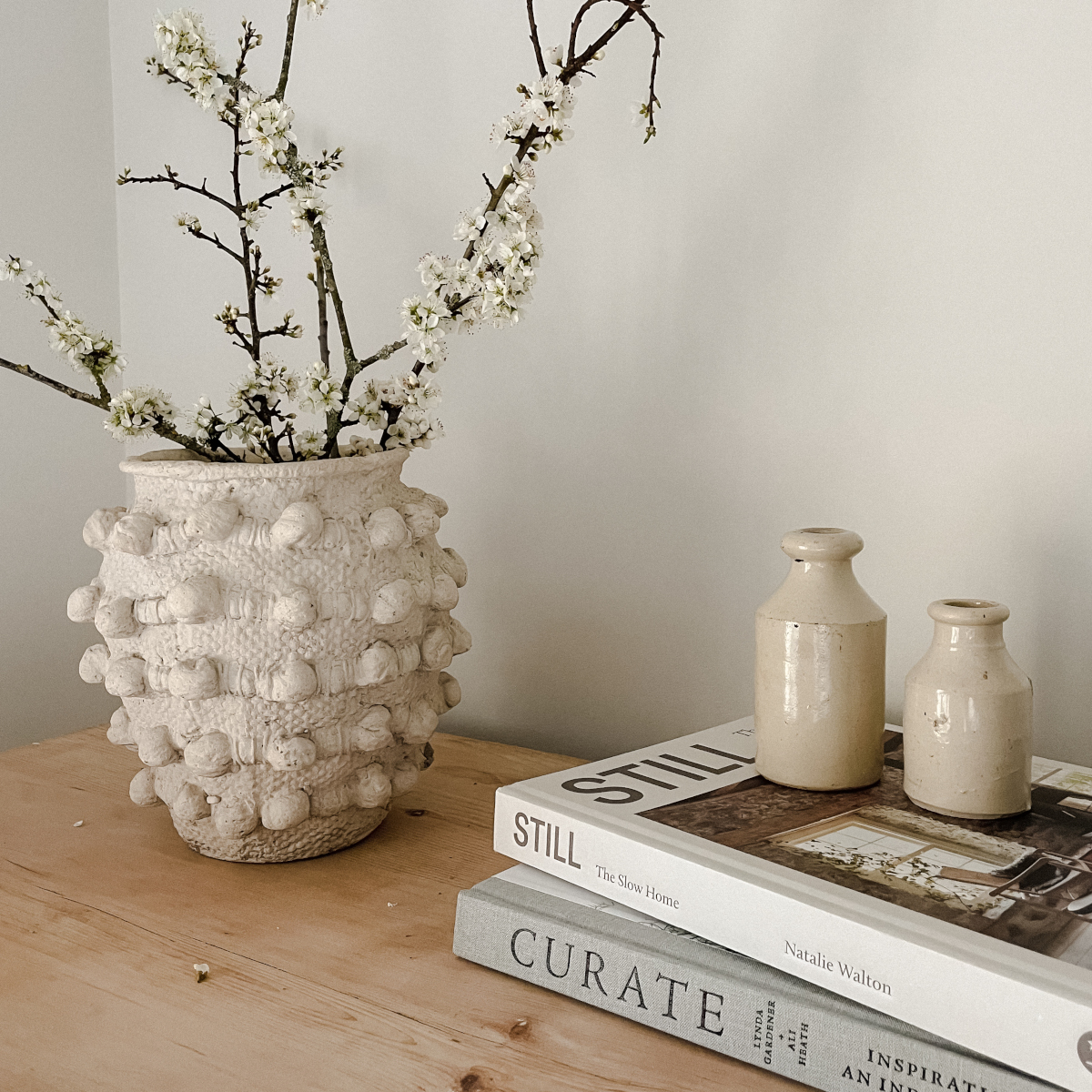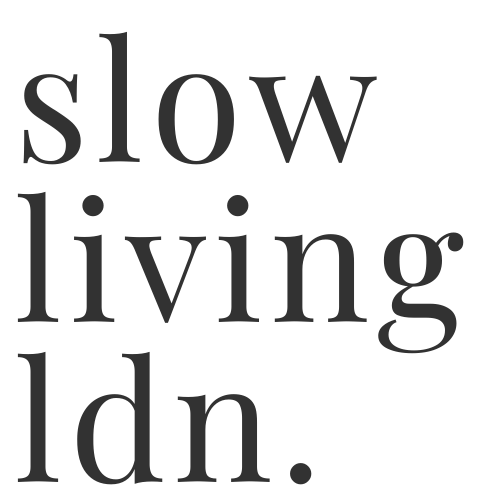You have no items in your cart. Want to get some nice things?
Go shopping
We’re often asked where to start with slow living. Those asking seek to know how to press pause in their hectic lifestyles, reduce stress and find fulfilment.
Since we believe slow living is a mindset, and a hugely personal one at that, there’s not one way to do this. There are, however, tips and techniques to find quiet, slow moments in your day to day routine. We like to call these ‘moments of everyday deceleration’, or mini rituals or habits. From exploring mindfulness to unplugging from tech, it can be tempting to start here with slow living. First though, read our guide on how to slow down, and identify why you’re seeking a slower lifestyle and how you can simplify your commitments, home and more. Without understanding what you have to gain, you’ll easily slip back into hurry. In other words, what does living better, not faster look like to you? Remember, slow living isn’t about pursuing life at a snail’s pace, it’s about doing things at the right speed, assigning everything and everyone the time and attention deserved.
“Slow living is all about creating time and space and energy for the things that matter most to us in life, so ask yourself what you stand to gain.”
Brooke McAlary
What are Moments of Everyday Deceleration?
After understanding why you’re seeking slow and what’s important to you to feel fulfilled, it’s time to think about building slow moments into your daily life. Moments of deceleration are like small circuit breakers within your day. They can help manage burnout and stress by encouraging you to step back and find perspective. Stress is our body’s fight or flight reaction kicking in when faced with potentially dangerous situations. It’s crucial, but if we’re constantly firing our stress response and running on adrenaline and cortisol, we’re likely to be putting our health at risk. Moments of everyday deceleration are about intentionally switching off autopilot, managing symptoms of stress and finding more fulfilment each and every day.
“The great benefit of slowing down is reclaiming the time and tranquility to make meaningful connections–with people, with culture, with work, with nature, with our own bodies and minds.”
Carl Honoré, In Praise of Slowness: Challenging the Cult of Speed
Soothing System | Moments of everyday deceleration also help engage our soothing system. When we’re burnt out, our emotional regulation systems are often out of balance. This means we’re favouring our threat and drive systems, while neglecting our soothing system, which is important for alleviating stress, finding contentment and connection.
Ways to Slow Down: Moments of Everyday Deceleration
Mindful Moments
Breathing is one of the simplest SOS circuit breakers. You can pause for a few slow, considered deep breaths pretty much anywhere. Trying meditation, yoga or other mindful activities and exercises can also help build slower moments into your day, activating your ‘being mode’, instead of your ‘doing mode’ and reducing stress.
Unplugged Moments

Embracing some slow tech time and unplugging from your phone and laptop is another simple way to slow down. If you’re working from a desk, create calendar reminders to step away from your workspace for a few minutes and stretch every few hours. At the end of the day, try to take a break from your phone and take a short walk to decompress before starting your evening, and facing any other commitments or tasks still to be done that day.
The blue light emitted from our screens can also interrupt our circadian rhythm when used in the evening. By supressing the release of the sleep hormone (melatonin) we can find it more difficult to start winding down to fall asleep. Using our phones before bed can also leave us alert from notifications and receiving news updates or messages. A phone-free bedtime ritual is a great place to start when building moments of everyday deceleration into your routine and creating a calm home which supports slow living.
Creative Moments
A review in the American Journal of Public Health titled, The Connection Between Art, Healing, and Public Health (2010), found that “creative engagement can decrease anxiety, stress, and mood disturbances”. Switching off from tech and other distractions and creating something with your hands, whether that’s crafting, writing, cooking or something else entirely, allows your mind to wander unstimulated.
To recognise the benefits of this, we only have to think back to recent lockdowns. A UCL report, The Role of the Arts during the COVID-19 Pandemic notes that 1 in 5 people increased their arts activity engagement during the first UK lockdown. The report continues that “time spent on creative hobbies was associated with increases in life satisfaction and decreases in symptoms of depression and anxiety.” Getting creative was found to “facilitate relaxation, escapism, mood, confidence, positivity and a sense of connection, and to reduce loneliness, worries and negative emotions”.
Uptake of creative activities reduced in subsequent lockdowns and we’d hazard a guess that many have ditched their new hobbies as normal time pressures have resumed. We may not be looking to fill our time so completely as we did during lockdown, but it’s clear that creative outlets shouldn’t be overlooked in the ‘new normal’.
Seasonal Moments
Being mindful doesn’t just have to mean meditation. Slowing down celebrates being present and savouring the seasons. Noticing the natural world around us can help evoke calm and make us feel more grounded.
It’s long been considered positive for well-being to spend time in nature, with benefits from lower blood pressure and stress hormone levels to improved mood. But how long do we need to spend to feel these benefits? An Exeter University study of 20,000 participants has helped clarify this. Those who spent at least two hours a week in green spaces (in one go or on separate occasions) were more likely to report good health and psychological well-being. Take a walk and notice the shape of leaves, colours of petals or shades of the sky. Or, why not arrange some fresh, seasonal flowers or do a few minutes of weeding or potting up in the garden? Even being surrounded by houseplants and embracing biophilic design has been proven by another University of Exeter study to improve productivity and well-being in the workplace.
If you’re new to slow living, start with our guide on how to slow down and pick up a few of the best slow living books.
